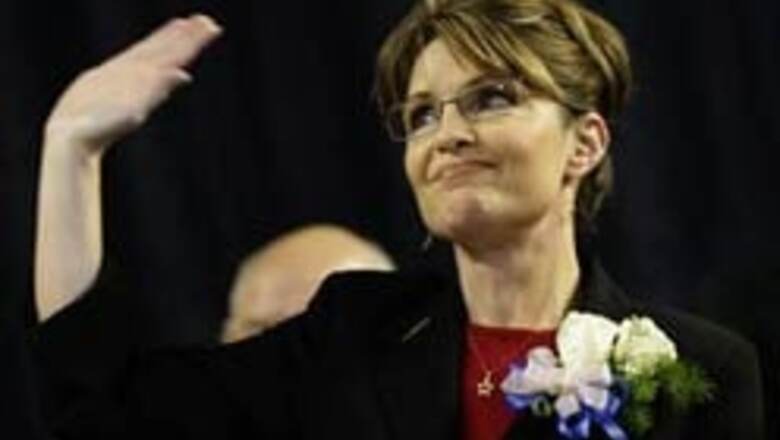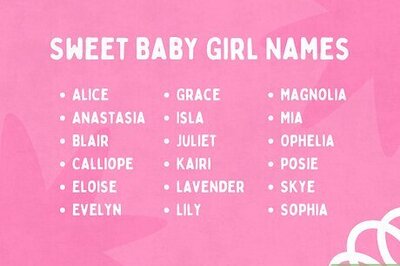
views
Washington: The United States hasn't seen the last of Sarah Palin, win or lose.
The presidential campaign has had an odd effect on Palin's unsettled place in political life. It punctured down-home myths about the Alaska governor and trimmed her down to size. Yet it may have helped her to be taken more seriously as a candidate in her own right, in a future election.
Palin came to the country's attention as a woman in the mold of the man at the top of the Republican ticket. Reformer, independent operator, foe of the status quo. You know, maverick.
What's the difference between pit bulls John McCain and Sarah Palin?
Lipstick.
So it seemed.
Scrutiny dulled the shine on McCain's choice of Palin. The crusader against the "bridge to nowhere" actually supported it. The clean-hands governor ended up the subject of legislative inquiry that found she abused power as governor. The woman who "took on" the oil companies also cries "drill, baby, drill."
She was Katy Couricked, Tina Feyed, dressed to the nines, wrapped in a kind of campaign bubble-pack lest she break, finally to break loose — or looser — from the McCain campaign's control. At which point frustrations by Palin allies over her rocky introduction to the public and by McCain backers over the Alaska governor's unscripted moments spilled out through anonymous quotes in news stories.
It's all a long way from her hometown of Wasilla, Alaska.
"Holy cow," said Chuck Heath, her dad, when he got word McCain had chosen his daughter as vice presidential candidate. That pretty much summed up the reaction of the country.
McCain's bold stroke brought the first woman ever to the Republican ticket, a strongly anti-abortion, anti-gay-marriage candidate who was one of the nation's most popular governors. But she was new to foreign affairs and the full sweep of national issues. She knew more about catching fish, which she once did for a part-time living, than about most of the policies in play.
But she was not a complete surprise to the political class. Democratic operatives had her on their radar screen for several months. She made them a bit nervous.
"She's exactly who I need," McCain said in introducing her. "She stands up for what's right, and she doesn't let anyone tell her to sit down."
Said Palin: "I didn't get into government to do the safe and easy things. A ship in harbor is safe, but that's not why the ship is built."
Out she sailed into the gale.
Palin has done the star turn at Republican rallies since her auspicious speaking debut at the Minnesota convention. On the stump, she's been the most biting critic of Democrat Barack Obama, a man she claimed — without factual basis — was "palling around with terrorists."
Social conservatives, lukewarm about McCain, came on side with her selection and finally showed enthusiasm for the fray. This, as Palin's popularity fell among Americans at large. After her fumbling interview with Katie Couric, the rap against her hardened that she was unqualified to step in to the presidency if needed.
Alaska's first female governor arrived at the state Capitol in 2006 on an ethics reform platform after defeating two former governors in the primary and general elections. Her prior political experience consisted of terms as Wasilla's mayor and councilwoman and a stint as head of the Alaska Oil and Gas Conservation Commission.
In the Republican gubernatorial primary, Palin defeated incumbent Gov. Frank Murkowski, who also had 22 years of experience in the U.S. Senate.
Her task didn't seem any easier in the general election, but she handily beat Tony Knowles, a popular Democrat who had served two earlier terms as governor.
During her first year in office, Palin moved away from the powerful old guard of the state Republican Party and presided over a tax increase on oil company profits that now has the state's treasury swelling.
But she is a bullish proponent of petroleum development, in tune with McCain, although the two disagree on drilling in Alaska's protected Arctic National Wildlife Refuge. She favors drilling there; he opposes it.
The governor also opposed designating polar bears as threatened under the Endangered Species Act, fearing that step would threaten offshore drilling.
She came into office preaching reform at a time when a federal corruption investigation dogged a number of Alaska's Republican elected officials. One such powerhouse, Sen. Ted Stevens, was convicted in the week before the presidential election on seven counts of trying to hide more than $250,000 in free home renovations and other gifts from a wealthy oil contractor.
To rid the Capitol of the appearance of undue influence, she kept lobbyists out of her office. And after two years as governor, her popularity reached 80 percent in approval ratings.
Still, she was shadowed through the presidential campaign by an inquiry that found she violated state ethics laws by letting a family dispute influence her decision-making as governor. Specifically, she had fired Alaska's public safety commissioner after she and her husband Todd had pressed him to dismiss her former brother-in-law as a state trooper.
Palin still makes her home in Wasilla, a town of 6,500 about 30 miles (48 kilometers) north of Anchorage, with her husband, a blue-collar North Slope oil worker who four times has won the Iron Dog, a 1,900-mile (3,057-kilometer) snow machine race. He is part Yup'ik Eskimo. The two used to spend summers fishing commercially for salmon, an enterprise that once left her with broken fingers.
The two met at a high school basketball game and they eloped in 1988, six years after graduation, to avoid the cost of a wedding.
"We had a bad fishing year that year, so we didn't have any money," Todd Palin told The Associated Press last year. "So we decided to spend 35 bucks and go down to the courthouse." They have five children.
Even before McCain picked Palin, people outside Alaska were beginning to notice the young governor with the bright smile — runner-up in the 1984 Miss Alaska contest — whose good looks spawned a bumper sticker that read: "Coldest State. Hottest Governor." In December, she posed for the fashion magazine Vogue but says she declined to don runway attire.
"At first they had me in a bunch of furs," she said of the photo shoot. "Yeah, I have furs on my wall, but I don't wear furs. I had to show them my bunny boots and my North Face clothing."
She did the photo shoot while just a few months pregnant, which the public did not know.
What she knew and others didn't at the time was that her son, Trig, would be born with Down syndrome. There was never a doubt that she and Todd would have the child, she told the AP earlier this year.
"We've both been very vocal about being pro life," Palin said. "We understand that every innocent life has wonderful potential."
Trig Paxson Van Palin (in homage to the rock band Van Halen) was born in April. With Trig in tow, Palin returned to work a few days later, for a meeting of her energy team. Trig and siblings were by the Palins' side or in their arms at the convention and many campaign events since.
Along the way, she proved a more divisive figure than McCain might have hoped — turning off many moderate independents and apparently failing to draw those who supported Democrat Hillary Rodham Clinton, the other woman of history in Campaign '08, in the primaries.
But she developed a following among social conservatives — as McCain needed. And as she will, too, if she hears the call to run, baby, run, another time.



















Comments
0 comment